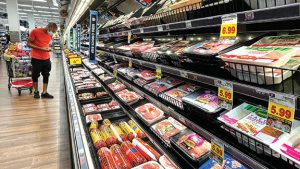Bloomberg
US consumer prices soared last year by the most in nearly four decades, illustrating red-hot inflation that sets the stage for the start of Federal Reserve interest-rate hikes as soon as March.
The consumer price index climbed 7% in 2021, the largest 12-month gain since June 1982, according to Labour Department data. The widely followed inflation gauge rose 0.5% from November, exceeding forecasts.
The median forecasts in a Bloomberg survey of economists called for a 7% annual gain and a 0.4% advance in the monthly measure.
Excluding the volatile food and energy components, so-called core prices accelerated from a month earlier, rising by a larger-than-forecast 0.6%. The measure jumped 5.5% from a year earlier, the biggest advance since 1991.
The increase in the CPI was led by higher prices for shelter and used vehicles. Food costs also contributed. Energy prices, which were a key driver of inflation through most of 2021, fell last month.
The data bolster expectations that the Fed will begin raising interest rates in March, a sharp policy adjustment from the timeline projected just a few months ago. High inflation has proven more stubborn and widespread than the central bank predicted amid unprecedented demand for goods along with capacity constraints related to the supply of both labour and materials.
Meanwhile, the unemployment rate has now fallen below 4%. Against this evolving backdrop, some Fed policy makers have said that it could be appropriate to begin shrinking the central bank’s balance sheet soon after
raising rates.
Market expectations for Fed tightening expected in March and 2022 as a whole were largely unchanged after the report. Yields on 10-year Treasuries fluctuated while S&P 500 futures maintained gains and the dollar extended its decline on the day.
The energy index declined 0.4% from November, the first monthly decline since April as gasoline prices slid. Food inflation climbed 0.5%, a slight deceleration from the previous month due to falling costs for meats.
“What we have now is a mismatch between demand and supply. We have very strong demand in areas where supply is constrained, particularly around goods, particularly around things like cars,†Fed Chair Jerome Powell told the Senate Banking Committee.
Shelter costs — which are considered to be a more structural component of the CPI and make up about a third of the overall index — rises 0.4% from the prior month. Other gauges of home prices and rents have surged last year, likely presaging a sharp acceleration in the report’s housing metrics this year and offering an enduring tailwind to inflation.
 The Gulf Time Newspaper One of the finest business newspapers in the UAE brought to you by our professional writers and editors.
The Gulf Time Newspaper One of the finest business newspapers in the UAE brought to you by our professional writers and editors.
